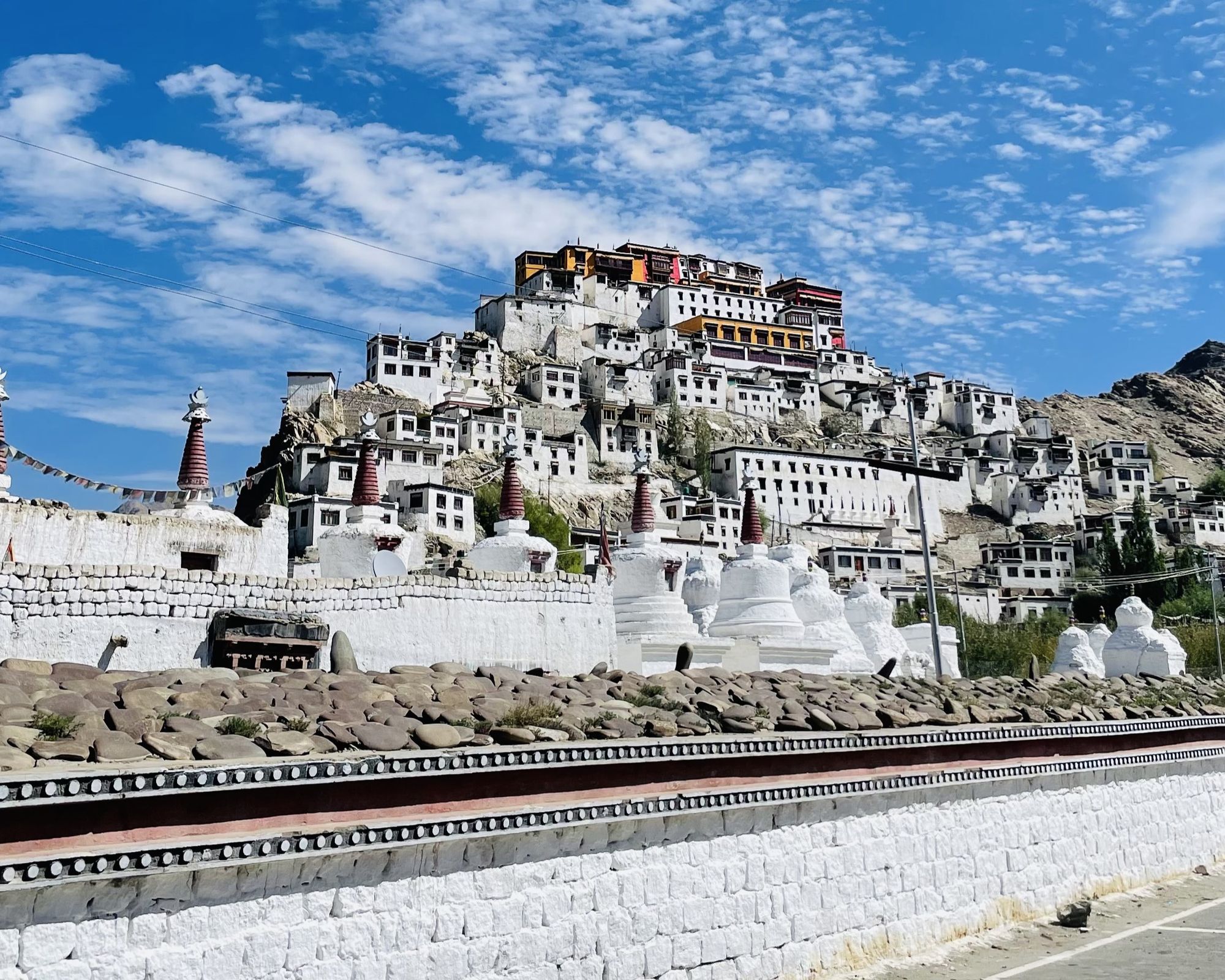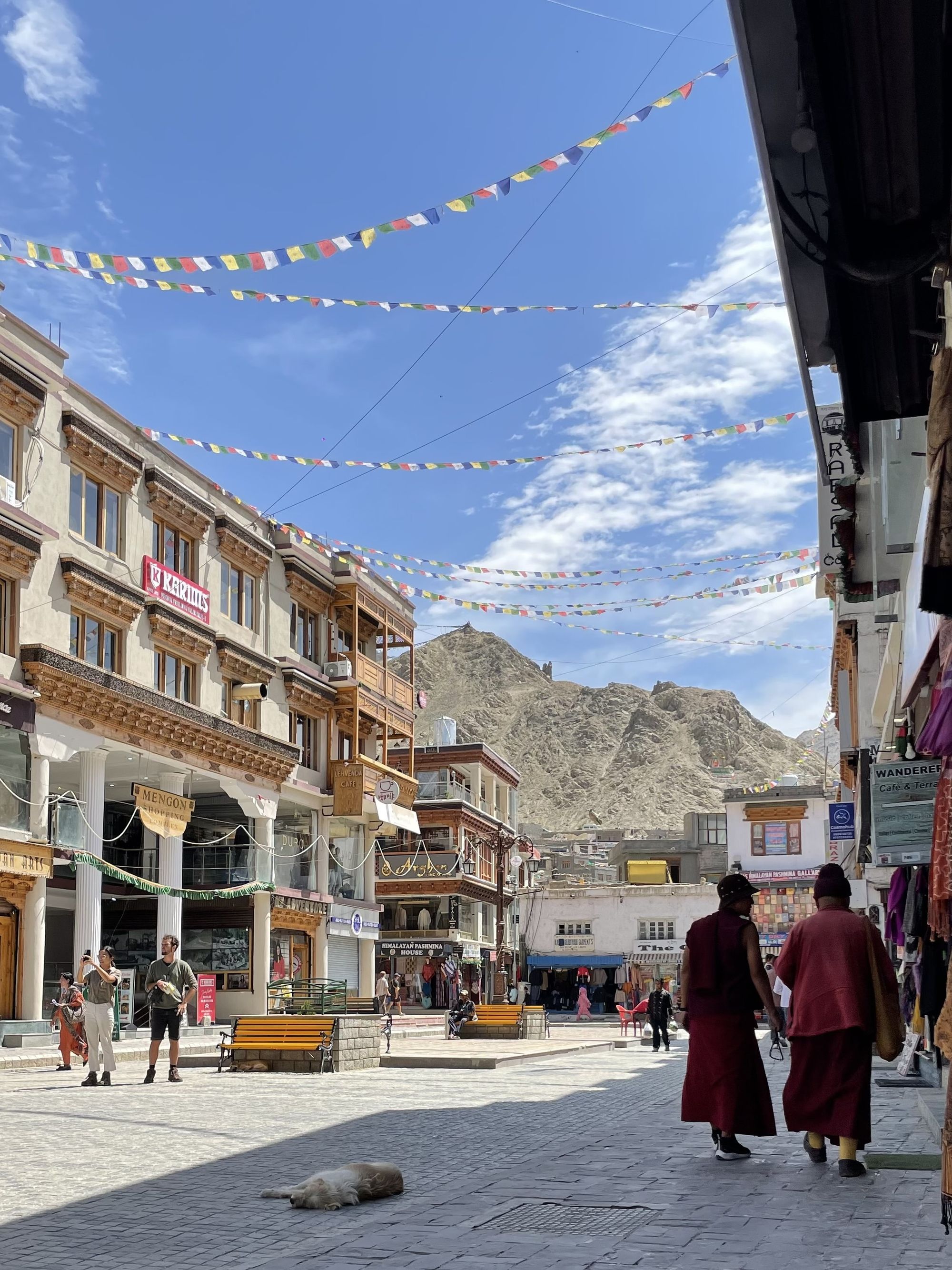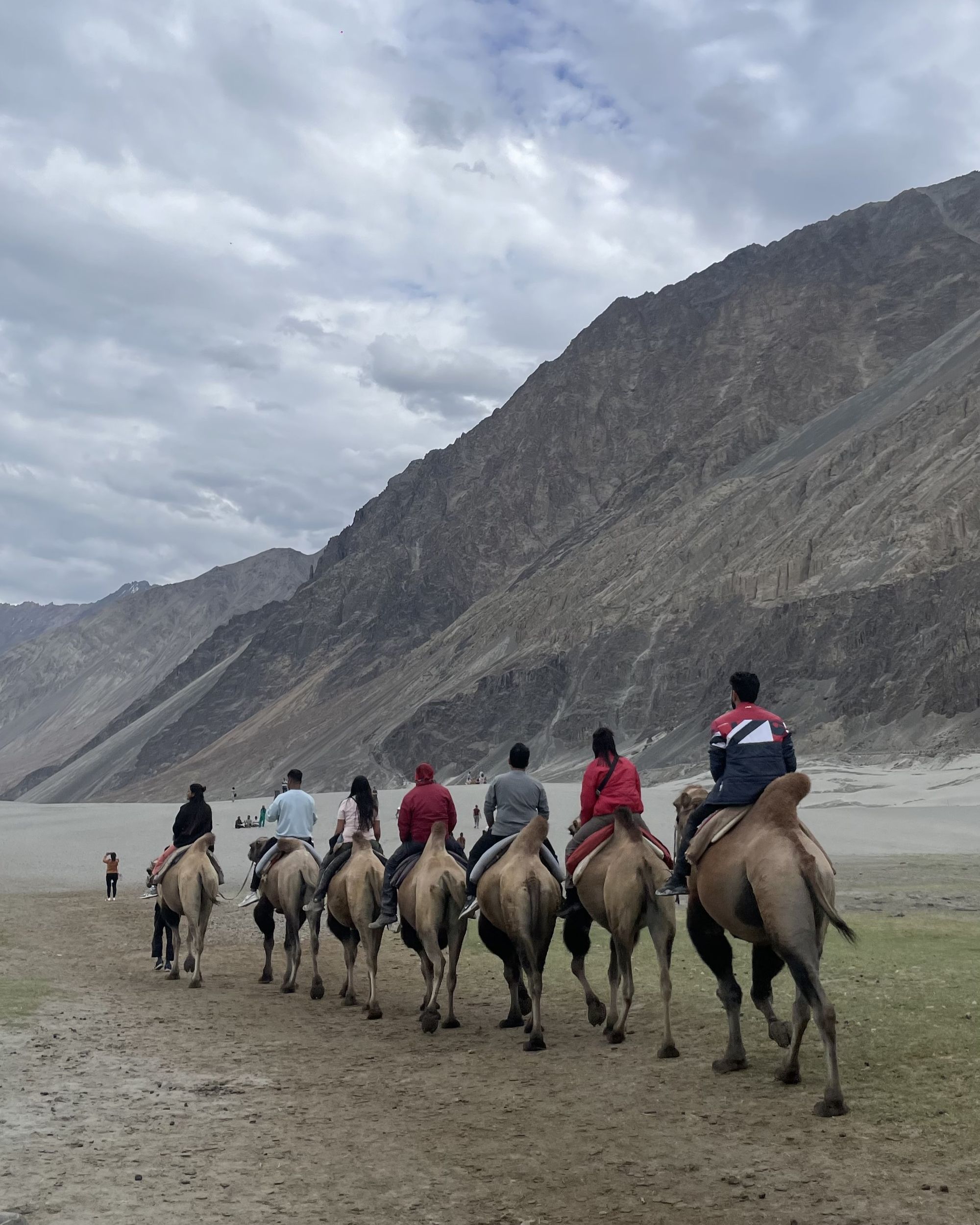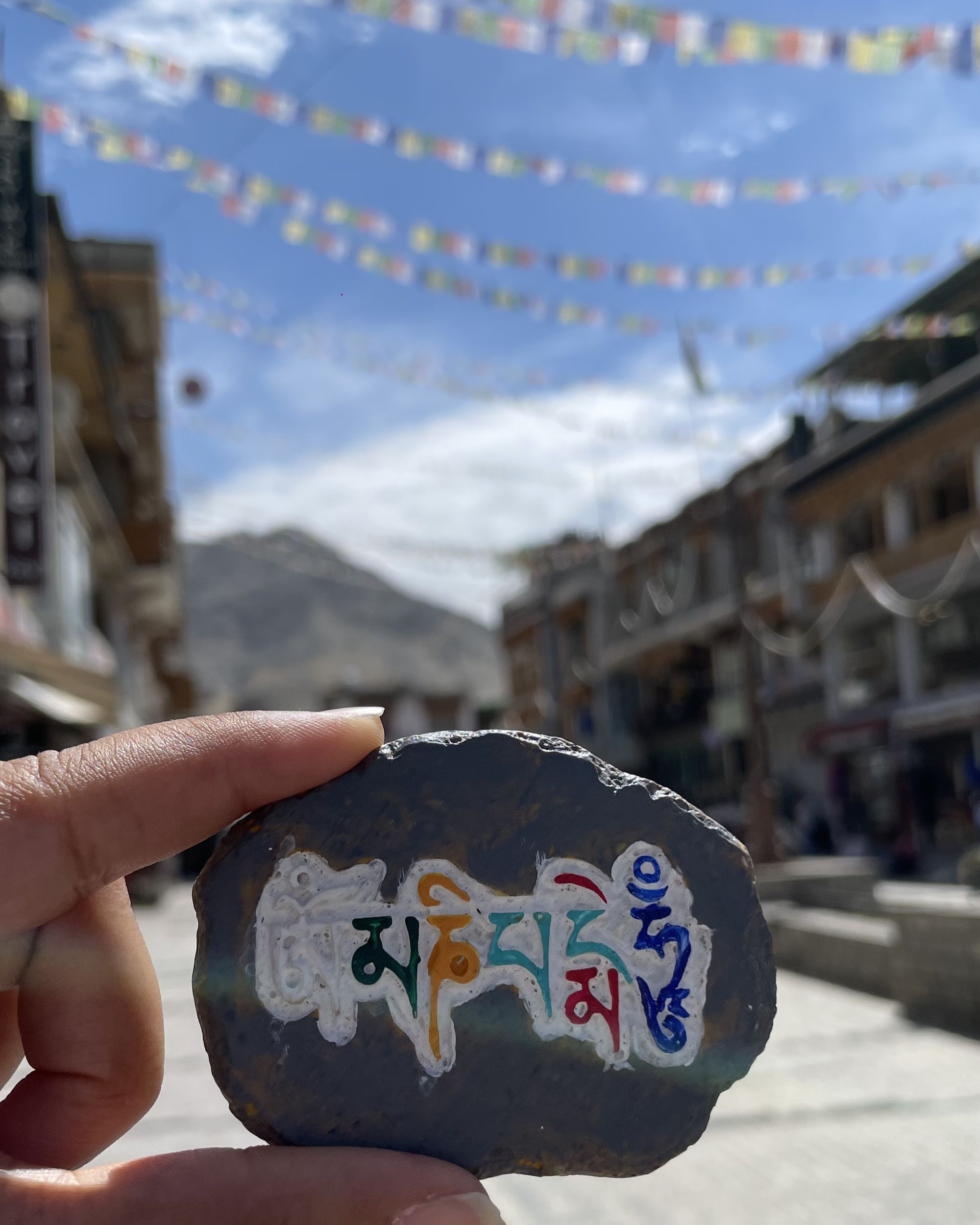Discovering Ladakh: A Tale of Monasteries, Mountains, and More

Nestled high in the northern reaches of India, Ladakh is a region unlike any other. Known as the "Land of High Passes" and often referred to as a cold desert, Ladakh boasts stunning landscapes, rich culture, and a unique way of life. This article invites you on a virtual journey to explore the wonders of Ladakh, from its breathtaking landscapes to its vibrant culture and traditions.
Geography and Climate
Ladakh is a high-altitude region, with an average elevation of over 11,000 feet (3,500 meters) above sea level. It is a part of the larger region of Jammu and Kashmir in northern India. The stark and arid landscape of Ladakh is a result of its rain-shadow location, shielded from the monsoon rains by the mighty Himalayas. This geographical isolation has given rise to Ladakh's unique climate, characterized by harsh winters and short summers.
The summer months, from June to September, are the best time to visit Ladakh when temperatures are relatively mild, and the region is accessible. Winters, on the other hand, see temperatures plummet well below freezing, making it one of the coldest inhabited places on Earth.
Natural Wonders
Ladakh's natural beauty is awe-inspiring and has captivated travelers for centuries. Here are some of the region's most iconic natural wonders:
- Pangong Lake: Known for its ever-changing shades of blue, this high-altitude saltwater lake stretches over 130 kilometers from India to China. It's a sight to behold and has become famous worldwide, particularly after featuring in the Bollywood movie "3 Idiots."
- Nubra Valley: Encircled by the Himalayas and the Karakoram Range, Nubra Valley is a picturesque oasis known for its sand dunes and the unique Bactrian camels. The valley offers a stark contrast to the barren mountains surrounding it.
- Zanskar Valley: Isolated and rugged, Zanskar Valley is a haven for trekkers and adventure enthusiasts. It's also home to some of the oldest monasteries in Ladakh.
- Ladakh's Monasteries: The region is dotted with ancient monasteries, including Thiksey, Hemis, and Diskit Gompa. These monasteries are not only places of worship but also centers of cultural and artistic heritage.

Culture and Traditions
Ladakh is a melting pot of cultures, influenced by Tibetan Buddhism and Central Asian traditions. The people of Ladakh, known as Ladakhis or Ladakhi Buddhists, have a rich cultural heritage that is evident in their art, music, dance, and festivals. Some cultural highlights include:
- Monastic Festivals: Ladakh's monasteries come alive during annual festivals, where monks perform traditional dances and rituals, often wearing elaborate costumes and masks. The Hemis Festival is one of the most famous.
- Traditional Cuisine: Ladakhi cuisine is unique and reflects the harsh climate of the region. Popular dishes include momos (dumplings), thukpa (noodle soup), and butter tea.
- Arts and Crafts: Ladakh is known for its intricate handwoven textiles, carpets, and Tibetan-style paintings called thangkas. These artistic traditions have been passed down through generations.
- Ladakhi Music and Dance: Traditional music, featuring instruments like the dramyin and surna, accompanies lively dance performances during festivals and celebrations.
How to Plan a Trip to Leh Ladakh for an Unforgettable Adventure
Planning a trip to Leh Ladakh can be an exhilarating experience, but it also requires careful consideration and preparation. From the mesmerizing landscapes to the rich culture and thrilling adventures, this Himalayan paradise offers an unforgettable journey for every traveler. In this ultimate guide, we will provide you with step-by-step instructions and essential tips to plan your trip to Leh Ladakh, ensuring that you make the most of your adventure.
1. Choose the Right Time to Visit
The first step in planning your trip to Leh Ladakh is selecting the right time to visit. The best time to explore this region is during the summer months, from May to September, when the weather is pleasant and the roads are accessible. However, if you prefer a more peaceful experience, you can also consider visiting during the shoulder seasons, such as April or October.
2. Determine the Duration of Your Trip
Next, you need to decide how long you want your trip to be. Allocating at least 8-10 days for your Leh Ladakh adventure will allow you to explore the region comfortably and acclimatize to the high altitude. This duration will give you ample time to visit popular attractions, undertake thrilling activities, and immerse yourself in the local culture.
3. Plan Your Itinerary
Once you have decided on the duration of your trip, it's time to plan your itinerary. Consider including the following highlights in your Leh Ladakh itinerary:
Day 1: Arrival in Leh
- Arrive at Leh Airport and transfer to your hotel.
- Spend the day acclimatizing to the high altitude.
- Explore the local markets and try some traditional Ladakhi cuisine.
Day 2: Leh Local Sightseeing
- Visit Shanti Stupa for panoramic views of Leh.
- Explore the historic Leh Palace and learn about Tibetan architecture.
- Take a stroll through the bustling Leh market and shop for souvenirs.

Day 3: Nubra Valley via Khardung-La Pass
- Drive to Nubra Valley, crossing the world-famous Khardung-La Pass.
- Visit Diskit Monastery and indulge in a camel safari in Hunder.
- Enjoy the stunning landscapes of the cold desert.

Day 4: Pangong Lake
- Embark on a thrilling drive to Pangong Lake.
- Marvel at the ever-changing hues of the lake.
- Enjoy a peaceful overnight stay in a camp near the lake.
Day 5: Tso Moriri Lake
- Explore the picturesque Tso Moriri Lake, known for its serene beauty.
- Visit Korzok Monastery and witness the local culture.
- Immerse yourself in the tranquility of this enchanting lake.
Day 6: Monasteries and Cultural Experiences
- Visit Hemis Monastery, Thiksey Monastery, and Shey Palace.
- Participate in the morning prayers and witness the monks' chanting.
- Immerse yourself in the rich cultural heritage of Ladakh.
Day 7: Adventure Activities
- Indulge in thrilling adventure activities like river rafting or mountain biking.
- Explore the lesser-known villages of Ladakh and interact with the locals.
- Experience the adrenaline rush as you conquer the challenging terrains.
Day 8: Departure from Leh
- Bid farewell to Leh Ladakh with unforgettable memories.
- Transfer to Leh Airport for your onward journey.
4. Make Travel and Accommodation Arrangements
After finalizing your itinerary, it's time to make travel and accommodation arrangements. Book your flights to Leh Airport well in advance to get the best deals. Additionally, consider staying in comfortable hotels or homestays that offer essential amenities and easy access to popular attractions. There are also options for adventure seekers to camp in tents amidst the scenic landscapes for a unique experience.
5. Acclimatize to the High Altitude
One of the most crucial aspects of planning a trip to Leh Ladakh is acclimatizing to the high altitude. Due to the region's elevation, it's essential to give your body time to adjust to the thin air. Upon arrival in Leh, take it easy for the first couple of days, stay hydrated, and avoid overexertion. This will help prevent altitude sickness and ensure a comfortable and enjoyable trip.
6. Pack Wisely for Your Adventure
When packing for your Leh Ladakh adventure, keep in mind the variable weather conditions and the activities you plan to undertake.
Here's a list of crucial items to include in your packing:
- Ensure your comfort and safety by packing warm attire, such as thermals, fleece jackets, and down jackets.
- Equip yourself for adventure with durable and comfortable footwear suitable for trekking and exploration.
- Shield yourself from the sun's intense rays with essentials like sunscreen, sunglasses, and a hat.
- Be prepared for unexpected situations with a basic medical kit that includes essential medications and first-aid supplies.
- Keep your electronic devices charged and ready with power banks and spare batteries.
- Capture the beauty of your journey with a high-quality camera to document the breathtaking landscapes.
7. Stay Safe and Respect the Local Culture
During your visit to Leh Ladakh, it's important to prioritize safety and respect the local culture. Here are some tips to ensure a responsible and enjoyable trip:
- Follow the advice of local authorities and guides regarding safety protocols.
- Respect the religious sites and dress modestly when visiting monasteries.
- Avoid littering and maintain cleanliness in natural surroundings.
- Interact with locals respectfully and learn about their customs and traditions.

Embrace the Adventure and Create Lasting Memories
Finally, once you have planned all the details and arrived in Leh Ladakh, it's time to embrace the adventure and create lasting memories. Immerse yourself in the breathtaking landscapes, engage in thrilling activities like river rafting or trekking, taste the local cuisine, and connect with the warm-hearted locals. Take time to appreciate the serene beauty of the region and let Leh Ladakh's captivating charm leave an indelible mark on your soul.